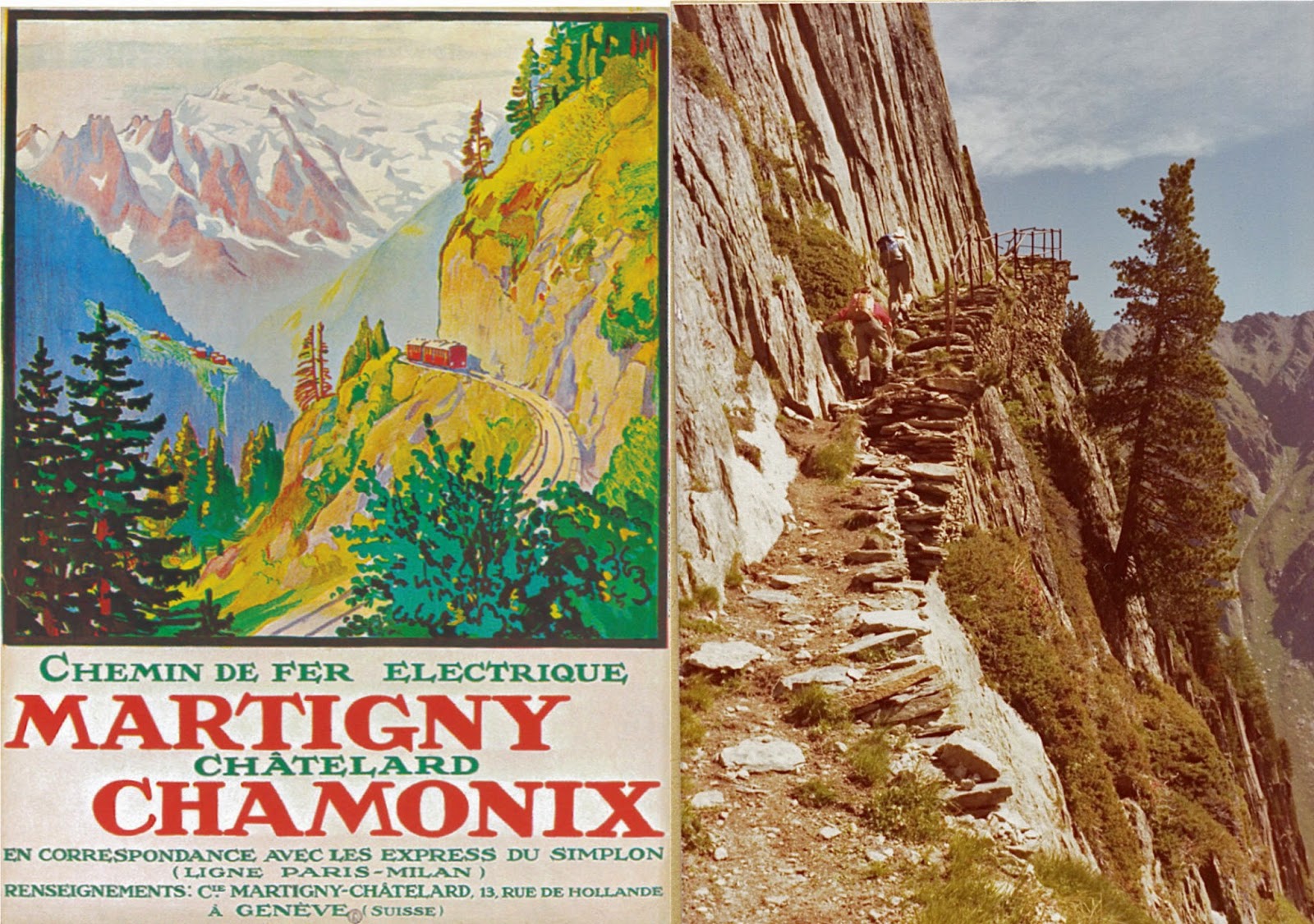06.5: Infrastructure
In the past and nowadays
A mountains / plains relationship
Until 1861, the valley of Finhaut / Marécottes / Salvan was very isolated. The people of the villages went to Martigny on foot for fairs and markets.
The stagecoach road between Martigny and Chamonix
The stagecoach road testifying to the boom in transalpine travel was built in 1861. The new road from Chamonix to Martigny passed through the villages of Vallorcine, Chatelard, Finhaut, Les Marécottes and Salvan, as far as Martigny.
The railway
Around 1900 railways started to appear in the mountains and, thanks to its popularity with tourists, the Trient valley was one of the first regions to have a cog railway. In 1906, the railway line from Martigny to Chamonix was opened. The village of Finhaut then became a famous holiday resort for the aristocracy and the bourgeoisie. Between the two world wars, the railway line was electrified thanks to construction of the first Barberine dam.
Rivalries between main roads
Up until the inter-war period there were two main roads connecting Martigny to Chamonix, namely the Martigny-Châtelard road via Salvan and Finhaut, and the Martigny-Châtelard road via the Forclaz Pass. For financial reasons, the Canton was unable to subsidise the repair of all roads. It was therefore decided in 1942 that the road would pass through Forclaz and link up with Finhaut, since the road through Salvan and Finhaut was too expensive. In addition, the road followed the railway track.
The road link between Martigny and Finhaut became topical again in the 1980s. In fact, these neighbouring communes, situated in the same valley, had no direct road link. As a result, if an inhabitant of Salvan wished to visit a relative in Finhaut, they would have to go down to Martigny and then take the Forclaz Pass to get to Finhaut. In other words 33 kilometres of mountain road, whereas in reality the two villages are separated by only five kilometres at most.
A valley cut off by the road
A consequence of this choice of main road between Martigny and Chatelard was to isolate the different communes and position Finhaut in a cul de sac. This isolation created a deficit in terms of development in the region. One of the only reasons for going to Finhaut today is to visit the Emosson dam. Today, the historic road network representative of development over the past 150 years is intact and ripe for rediscovery!
A valley connected by rail
The village of Finhaut is situated on a strategic main route between the two towns of Chamonix and Martigny. The railway is a powerful landmark in this area. It connects villages in the same valley not served by road.
Finhaut is 30 minutes from Martigny and 40 minutes from Chamonix by train.
FURTHER INFORMATION
READING
Subscribe to:
Post Comments (Atom)





No comments: